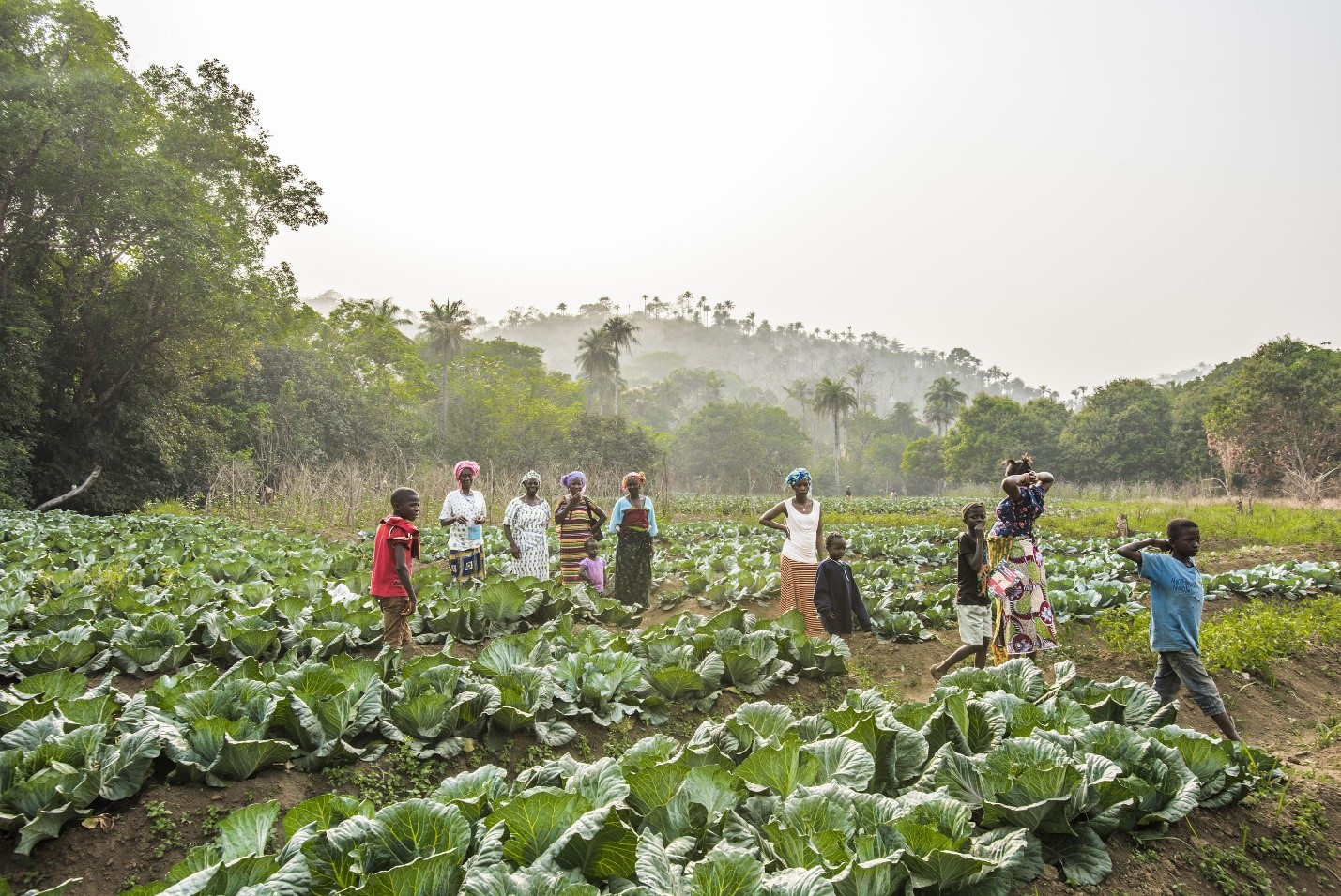We are in the midst of a confluence of crises. Climate change and biodiversity loss threaten our natural and human systems. COVID-19 has disrupted lives and livelihoods across the planet, driving up to 130 million people into chronic hunger and 124 million people into extreme poverty over the past year. Greater reliance on forests for food, fuel and shelter and increased incidents of illegal harvesting of forest resources add to pressures on forest ecosystems.
The world must meaningfully – and urgently – address these pressures to collectively turn the tide on deforestation and to achieve the ambitions set out in Agenda 2030 and the Paris Agreement. Transforming our food systems – the way we produce, process, transport and consume food – to better serve people and the planet is an immediate priority. Agricultural production and land use conversion due to deforestation together account for approximately 23% of global net anthropogenic greenhouse gas (GHG) emissions. Making food systems more resource efficient can reduce incentives to convert forests, which are both key to climate regulation and home to most of the earth’s territorial biodiversity.
Discussions at recent international fora (such as COFO25 and WFW7) demonstrate a general consensus among governments, experts and civil society that both food systems and forests will play a key part in solving the confluence of climate, economic and health crises plaguing our world today. Here are some compelling insights we’ve come away with:
-
Food systems transformation can deliver on multiple SDG commitments including hunger, climate change, biodiversity, forests. However, this requires concerted and concurrent action across the system to promote healthy diets, repurpose agricultural subsidies, scale up payments for ecosystem services – including REDD+, halt the conversion of natural ecosystems, end environmental crime and recognise the rights and territories of Indigenous peoples.
-
By 2050, to sustainably meet projected food demand, we need to increase production by 50% on existing agricultural land, reduce agricultural emissions by two-thirds and restore degraded land. In other words, crop and livestock yields must increase – and be paired with protection – to avoid the clearance of hundreds of millions of hectares of forest land for croplands and pastures.
-
Protection is essential but not sufficient. For this reason, we must find ways to reduce the pressures driving agricultural expansion, such as raising productivity, shifting diets and demand, promoting responsible private and public sector sourcing, reducing food loss and waste and enhancing efficiencies throughout agricultural value chains.
-
Trade-offs exist at the national and local levels and differ across geographies. There is no one-size-fits-all approach. Productivity enhancement, especially by millions of poor rural producers, is not simple. Technology alone is not enough. Over decades, there has been low adoption, marred by institutional and financing constraints.
-
Transitions to more sustainable food systems must not place disproportionate burdens on rural livelihoods or those living in extreme poverty. Countries are putting targeted programmes in place, but more is needed. For example, through agroforestry, restoration of degraded land and integrated REDD+ projects supported by the Central African Forest Initiative, the Democratic Republic of the Congo has seen some success in reducing poverty while protecting forests.
-
Food systems comprise millions of actors, from farmers to consumers. Incentives need to be put in place by governments and investors to shift to sustainable consumption and production patterns. This includes pricing carbon, repurposing subsidies and scaling up payments for ecosystem services. It also entails re-aligning policies to address the impacts of agricultural production on forests and to promote markets for legally produced and sustainable agriculture and forest products.
-
Business model innovation and institutional investment can provide key pathways to incentivising food systems transformation. Companies can re-evaluate their priorities and business structures to prioritise social, environmental and financial outcomes – the triple bottom line. Institutional investors can set higher standards for investment. Tools such as subsidized finance, blended finance and green bonds can be used to mainstream these innovations and unlock institutional capital.
-
Governments have an unprecedented opportunity to catalyse private finance and investment at scale to drive positive change for forests. Strengthening governance and tenure, undertaking integrated landscape planning and clearly identifying how businesses can contribute to sustainable land and forest management and sustainable commodity value chains can all pave the way for public-private partnerships and allow producer countries to enhance economic development while protecting forests.
-
By leveraging domestic and international public finance, including climate finance and REDD+ results-based payments from sources such as the Green Climate Fund, countries can fund public goods, such as better quality of and better access to data and information. Targeted public funds can also mobilize greater flows of private finance by de-risking agricultural and forestry investments that contribute to food systems transformation.
-
Developing countries continue to require technical and financial support to accelerate implementation of national REDD+ strategies and integrated landscape management, such as support provided by the UN-REDD programme. Emerging regulations and due diligence requirements in consumer countries meant to address the impact of agricultural commodities on forest loss should be paired with strong partnerships and meaningful support to producer countries in order to protect both forests and livelihoods;
-
Economic recovery and stimulus funds provide a unique opportunity to integrate actions that safeguard forests and encourage their sustainable use in the rebuilding of national economies post-COVID-19. In Indonesia, rural food security is a major priority for the national government in light of the pandemic and is one reason the government is supporting labour-intensive activities, such as forest rehabilitation at the community level.
In the run-up to three major events on climate change: COP26, COP15 and Food Systems Summit, questions remain over how to implement these critical transformations and how to balance local trade-offs. It is critical that these provide a path forward for nature-positive pathways to safeguard forests and encourage their sustainable use in the rebuilding of national economies. Solutions must build upon evidence, and recent developments in enhancing quality and accessibility of data can both help inform decisions and track progress to guide implementation and learning.



